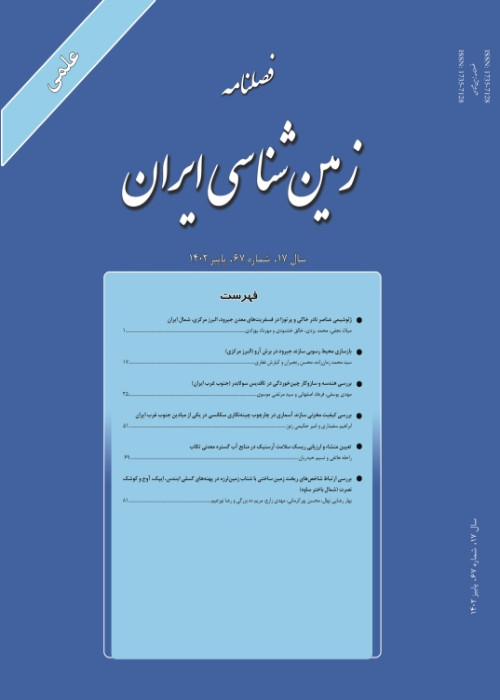Probable Tsunami in the south Caspian Sea by a large earthquake!
Author(s):
Nazarih.* , Ghorashim. , Kaveh Firouza. , Ensanim. , Baharfirozi , Kh , Azizia. , Lakr. , Karimi Bavandpoura. , Mohamadi Vizhehm. , Sobotif. , Razavi , A
Abstract:
The South Caspian basin is surrounded by the Central Alborz mountain range in South and Talesh Mountain in its south western side respectively. The Central Alborz with E-W and Talesh with NS trends which bounding the Caspian Sea to the south and south west, as an active terrain belonging to the Alpine-Himalayan seismic belt. The Khazar (Caspian) fault, with about 450 kilometres long, and Astara fault, 110km long appear as the northern border of the Central Alborz and eastern border of the Talesh chain where Mesozoic and Paleogene rock units overthrust on the young deposits of the South Caspian plain. Based on morphotectonics and paleoseismologic studies, we suggest that a major part of the present shortening in Alborz is concentrated on the northern face of the chain along the Khazar fault zone; it is however worth noting that this contact might be located further to the North under the sea. This border can be interpreted as frontal contact between Alborz and the South-Caspian basin. A recent stratigraphic study on the Holocene –Pleistocene in East of the Haraz valley, suggests an incision rate of 1.25 mm/yr as calculated for the last 12 Kyr. If it is assumed that the incision is related to the vertical component along the Khazar fault, the horizontal N-S shortening along this fault would be 2.5 mm/yr (for a 35° S-dipping fault). This is only 1/10th of the total shortening of Alborz, estimated 5 ± 2 mm/yr. The Astara fault as major active fault system in south west of the SCB, based on the seismic and geophysical observation it seems propagated under the sea as well as the Khazar fault. Many earthquakes may have been caused by the activity of various branches of these fault systems in land or sea parts of the SCB.On the basis of the basin geometry, propagated faults to north or east and their land slope, besides more than 20 km thickness of Neogene and Quaternary deposits in the south Caspian Basin in the scenario with the possibility of a seismic activity on the Khazar or the Astara faults or one of them propagated branches to the north and east with magnitude M ≥ 7, as the closest active faults to the great lake can trigger many large submarine earthquake ruptures or submarine landslides which is potential for generating Tsunamis in the steep southern coast.
Keywords:
Earthquake , Caspian , Astara Fault , Khazar Fault , Tsunami
Language:
Persian
Published:
Iranian Journal of Geology, Volume:8 Issue: 32, 2015
Pages:
57 to 72
magiran.com/p1397945
دانلود و مطالعه متن این مقاله با یکی از روشهای زیر امکان پذیر است:
اشتراک شخصی
با عضویت و پرداخت آنلاین حق اشتراک یکساله به مبلغ 1,390,000ريال میتوانید 70 عنوان مطلب دانلود کنید!
اشتراک سازمانی
به کتابخانه دانشگاه یا محل کار خود پیشنهاد کنید تا اشتراک سازمانی این پایگاه را برای دسترسی نامحدود همه کاربران به متن مطالب تهیه نمایند!
توجه!
- حق عضویت دریافتی صرف حمایت از نشریات عضو و نگهداری، تکمیل و توسعه مگیران میشود.
- پرداخت حق اشتراک و دانلود مقالات اجازه بازنشر آن در سایر رسانههای چاپی و دیجیتال را به کاربر نمیدهد.
In order to view content subscription is required
Personal subscription
Subscribe magiran.com for 70 € euros via PayPal and download 70 articles during a year.
Organization subscription
Please contact us to subscribe your university or library for unlimited access!


